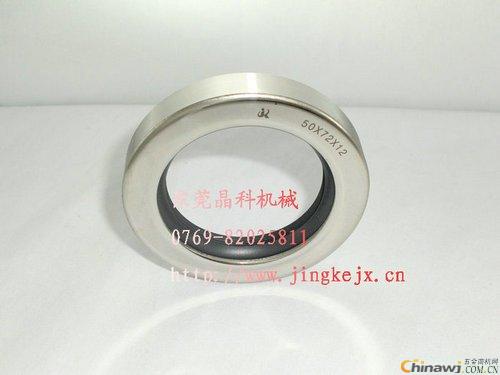Reasons for the oil leakage of the air compressor oil seal and troubleshooting methods:
When using Dongguan Lingge air compressors, users often encounter three common types of faults: oil leakage, overheating, and abnormal noises. Understanding these issues and how to resolve them can help maintain the performance and longevity of the equipment.
Fault phenomenon: During normal operation, oil leakage from the air compressor is a frequent issue, with visible signs of lubricating oil escaping from the unit.
Cause of the issue:
1. Stainless steel oil seals may become dislodged or develop defects that lead to oil leaks.
2. If the spindle is loose, it can cause the oil seal to fail and result in oil leakage.
3. Leaks can occur at joint surfaces, especially if the inlet or return oil pipe connections are not tight.
4. A belt that's too tight can cause excessive wear on the main shaft, leading to potential oil leaks.
5. Casting or machining defects in the housing can also contribute to oil leakage problems.
Troubleshooting methods:
1. When an oil leak is detected, inspect the oil seal area carefully. Look for cracks, damage to the inner lip, or flaring. If any of these issues are found, replace the oil seal immediately.
2. Check the contact surface between the oil seal and the spindle for scratches or imperfections. If damaged, the oil seal should be replaced.
3. Ensure the oil return path is clear and unobstructed. If the return is too restricted, it can increase pressure in the crankcase, causing the oil seal to leak or even fall off. Make sure the oil pipe has the minimum required diameter, is not bent or twisted, and allows smooth oil flow.
4. Verify that the oil seal fits properly within the housing. If the dimensions do not meet specifications, replace the oil seal.
5. Inspect the spindle neck clearance. If it's too large, both the bushing and the oil seal should be replaced together to prevent further leaks.
6. Examine all joint seals for wear or damage. Repair or replace gaskets as needed, and tighten all bolts and threaded connections on the inlet and return oil ports.
7. Adjust the belt tension appropriately. A good rule of thumb is to press the belt with your thumb and ensure it moves about 10 mm.
8. Finally, check the casting or machining quality of the housing. If there are any defects, repair or replace the affected parts to eliminate the source of the leak.

Types Of Valves can be very diverse in the flow control industries. The category trys to provide very simple valve selection guidance for our valued customers. A basic principle is clear and effective to grasp the key point. We would adopt industry of valve applications, industrial valve structures, industrial valve functions, etc. Help you getting a proper industrial valves in very short time.
Valve Selection Guide, Simple Valve Selection Guidance, Guidance on Valves Selection
Zhejiang Philic Fluid Control Co.,LTD , https://www.philicflow.com
